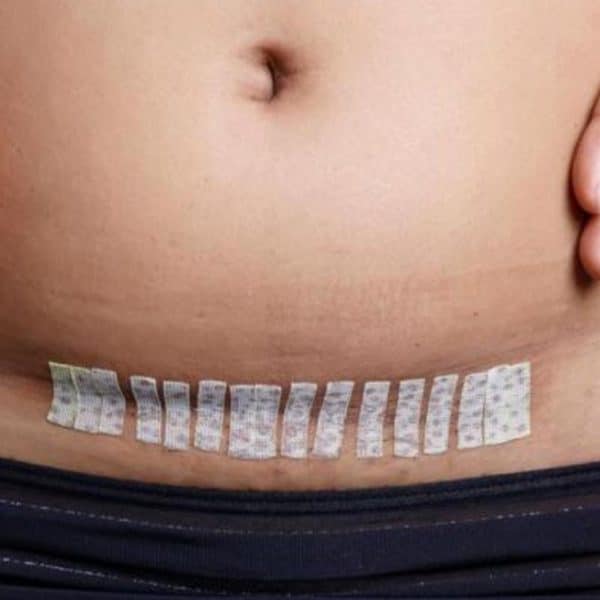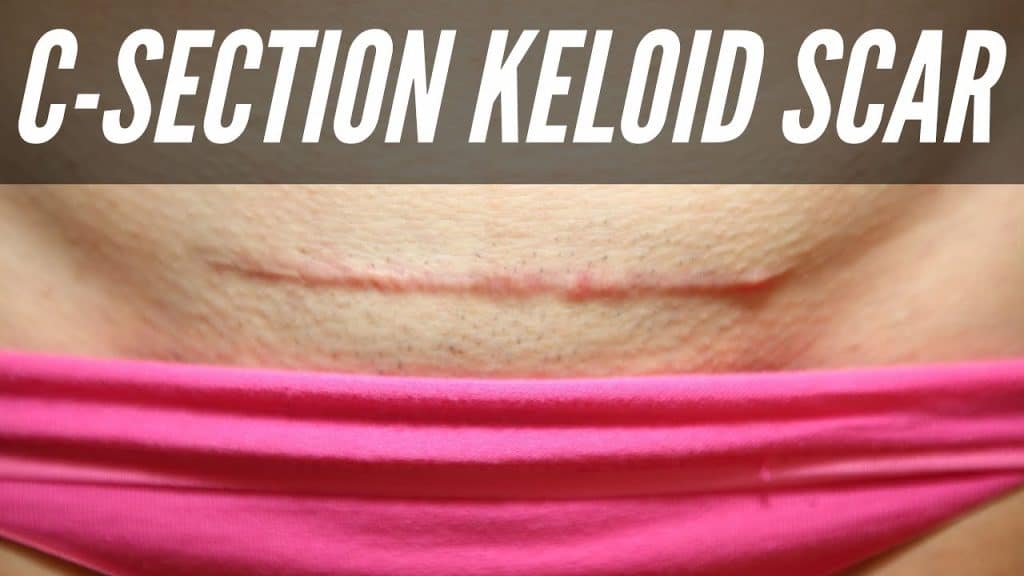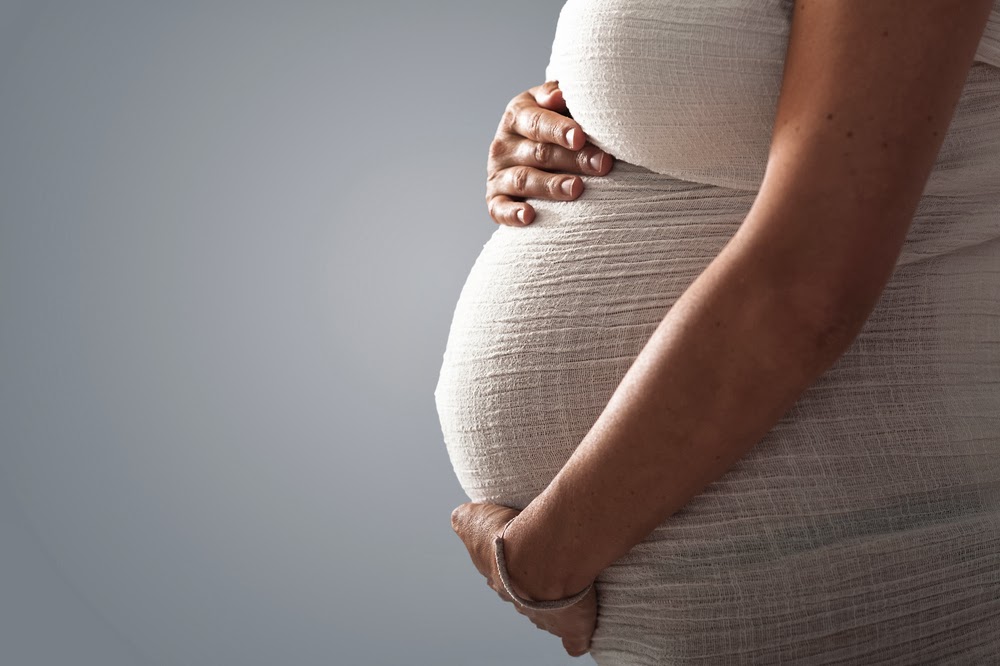The journey through pregnancy culminates in an event that forever changes a woman’s life, not just through the birth of a child but also through the physical marks it leaves behind. For many, this mark comes in the form of a C-section scar, a permanent reminder of the moment their child was brought into the world. Understanding and caring for this scar is a matter of physical health and emotional and psychological well-being. This article aims to guide those who are navigating the complexities of healing and living with a C-section scar, offering insights into the care, management, and emotional support necessary for this journey.
Contents
Understanding C-Section Scars

A C-section scar is the result of a surgical procedure that creates an incision through the abdominal wall and uterus to deliver a baby. This incision can vary in length, depth, and position, depending on various factors, including the surgical approach and the mother’s anatomy. Initially, the scar may appear red, raised, and somewhat alarming to those unaccustomed to surgical scars. However, this is a normal part of the body’s healing process, where collagen fibers work to repair the tissue, gradually changing the scar’s appearance over time.
In the weeks following the operation, the scar begins to heal, transforming in appearance and sensation. Proper aftercare is crucial during this period to prevent infection and ensure optimal healing. This includes keeping the area clean, avoiding strenuous activity that might stress the incision site, and following any specific care instructions healthcare professionals provide. Observing the scar’s healing process helps individuals recognize normal changes versus signs of complications, such as increased pain, swelling, or redness, which require prompt medical attention.
The First Few Months

As the body continues to recover, the C-section scar starts to settle into its more permanent state. The first few months are a critical time for scar care, with the focus shifting towards minimizing its appearance and preventing discomfort. The scar typically becomes less tender during this phase, and the redness fades. It’s important to continue observing the scar for any signs of abnormal healing and to maintain a regimen of gentle care, including applying recommended scar-reduction treatments, such as silicone sheets or scar massage, which can help flatten and soften the scar tissue.
The emotional adjustment to the scar also begins during these initial months. Many women experience a range of feelings, from pride in their scar as a symbol of their childbirth experience to concerns about its appearance and impact on their body image. If needed, support from loved ones and professional advice play a key role in navigating these emotional aspects. Engaging in open conversations about these feelings, seeking support from communities of other mothers, and focusing on the overall joy of motherhood can aid in the emotional healing process.
Long-Term Scar Management

Over the years, a C-section scar undergoes significant changes, becoming paler and less noticeable. However, long-term care remains important for maintaining the health and appearance of the scar. Protecting the scar from sun exposure is vital, as UV rays can darken it and make it more prominent. Additionally, ongoing use of scar management treatments can continue to benefit the scar’s appearance, even years after the surgery. Regularly monitoring the scar for any late-onset complications is also advisable, as issues can arise even after a significant period of apparent stability.
Long-term scar management also includes considering the scar’s impact on future pregnancies. Discussions with healthcare providers about the risks and considerations of vaginal births after C-sections (VBAC) or the necessity of future C-sections are important. This planning ensures that any future pregnancies are approached with a clear understanding of the implications for the C-section scar, including potential risks and the need for additional scar care or preventive measures.
Complications and Solutions

While most C-section scars heal without significant issues, some individuals may experience complications such as infections, keloid formation, or hypertrophic scarring. Recognizing the signs of these complications early is crucial for effective treatment. Infections may manifest as increased redness, warmth, swelling, or discharge from the scar site and require prompt medical attention. Keloids and hypertrophic scars, which are forms of excessive scar tissue growth, may benefit from steroid injections, laser therapy, or surgical revision to improve appearance and reduce discomfort.
Managing these complications often involves a multidisciplinary approach, including consultation with dermatologists or plastic surgeons specializing in scar management. It’s important for individuals to follow through with recommended treatments and to communicate openly with their healthcare providers about their concerns and expectations. Through proactive management, most complications can be effectively addressed, improving outcomes and satisfaction with the scar’s appearance.
Emotional and Psychological Impact

The emotional and psychological journey of adapting to a C-section scar is as individual as the physical healing process. For many, the scar is a visual reminder of a pivotal life event intertwined with feelings of joy, relief, or sometimes trauma. It’s common for women to grapple with changes to their body image, navigating a mix of pride and concern over their scar’s appearance. This emotional healing process is an integral part of overall recovery, highlighting the need for support systems that address not only the physical but also the emotional aspects of C-section recovery.
Creating a space for open dialogue about these feelings, whether through personal networks, professional counseling, or online communities, can provide valuable support. Acknowledging and validating these emotions is crucial, as is recognizing that feelings towards the scar may evolve. For many, the scar eventually becomes a symbol of strength and resilience, a physical testament to the experience of childbirth and the beginning of a new chapter in life.
Tips for Minimizing Scar Appearance

Several practical steps can be taken to minimize the appearance of a C-section scar. Consistent care routines that include gentle cleansing, moisturizing, and applying scar reduction products can significantly affect the scar’s healing and appearance. Over-the-counter options like silicone gel or sheets are widely recommended for their effectiveness in softening and flattening scars. Additionally, lifestyle choices such as maintaining a balanced diet rich in vitamins and minerals support the body’s natural healing processes, promoting healthier skin and scar tissue.
With medical clearance, exercise can also play a role in the appearance of the C-section scar. Activities that strengthen the core and improve overall physical health can help reduce the stress on the scar area and support its healing. However, it’s essential to approach exercise cautiously in the early postpartum period, gradually increasing intensity based on comfort and medical advice to avoid strain on the healing incision.

For women considering future pregnancies after a C-section, understanding the potential impact on the scar is crucial. Discussions with healthcare providers about the options for VBAC or the likelihood of requiring additional C-sections are important for informed decision-making. These conversations should include considerations of the scar’s condition, the risks of uterine rupture, and the overall health and preferences of the mother. Planning for future pregnancies with an awareness of these factors allows for better preparation, potentially influencing the approach to childbirth and the management of the C-section scar.
Embracing the possibility of future pregnancies also involves preparing mentally and emotionally for the changes that may come. Whether opting for a VBAC or another C-section, the anticipation of adding to the family while managing the implications of the C-section scar requires support, understanding, and careful planning. By addressing these considerations well in advance, women can approach future pregnancies with confidence and clarity.
In Closing: Embracing the Journey
The journey of healing and living with a C-section scar encompasses a broad spectrum of experiences, from immediate physical recovery to long-term scar management and deeply personal emotional adjustments. Embracing this journey requires patience, care, and support, as well as an understanding that the scar is not just a mark of surgery but a symbol of life and strength. Through informed care, proactive management, and the support of a compassionate community, individuals can navigate the complexities of this experience with confidence and grace. Ultimately, the C-section scar becomes part of the unique story of motherhood, a reminder of resilience, and the profound connection between a mother and her child.


